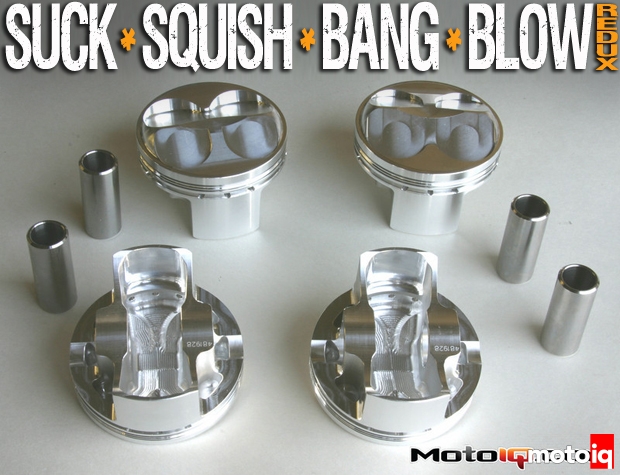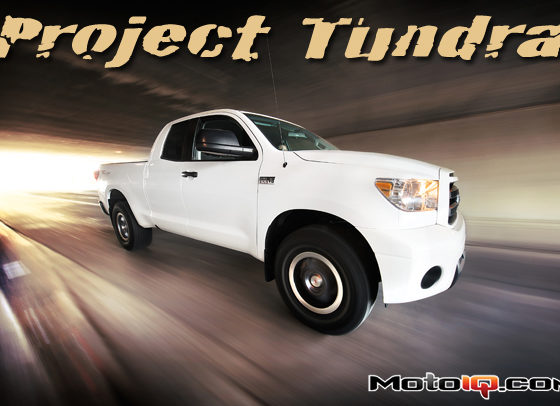
Suck, Squish, Bang, Blow – Part 1: Everything You Ever Wanted To Know About Engines
(But Were Afraid To Ask)
By Mike Kojima
Have you ever gotten soundly beaten at the strip by a lesser car that you should have smoked? Does your buddy with his almost stock identical car pull away from you in a roll-on consistently even though you supposedly have all the best bolt ons? Tired of losing in front of the crowds at events? Does the local “Guru” who works at your friendly neighborhood speed shop intimidate you with quasi-scientific BS when you try to buy something? How do you know if the mail order house phone salesman is giving you the straight scoop on that camshaft he is recommending? Which of many turbos on the market should you get for your car? If these questions seem familiar, then this series that we are launching is something you should read!
In the coming months we will explain all of the basics of how to extract more power from that noisy chunk of metal connected to the wheels. Your new knowledge can be put to good use when selecting hop up parts for your ride, helping you make good solid choices of where best to spend your hard earned money. With knowledge you will be able to make informed choices when buying parts and will be less likely to get punked by unscrupulous mechanics. In this series we will explain how all the popular hop up parts work, how to understand there specifications and how to pick the right parts to best fit your needs.

To understand how the latest in speed parts work, you first need to understand how an engine works! Let’s get down to it and see what makes a basic automobile engine tick. We will break this down into its most simple basic elements because we need to make sure all of you readers are on the same page. If you are an advanced guy, you might not need to read this but let's not make any assumptions about anyone's abilities. We will be getting into the most advanced concepts of engines soon enough as we all progress in our base of knowledge.
Cars are, for the most part with the exception being the Wankle cycle rotary Mazda, powered by what is called a 4-Stroke engine. A 4-Stroke refers to the 4 strokes in the power cycle, the intake stroke, the compression stroke, the power stroke and the exhaust stroke. We will explain those in a minute. The 4 stroke cycle is how an explosion of gasoline and air can be smoothly transferred into useable power to hurl you down the quarter mile or take you to work. Technically, engine is the correct term to use for a cars power plant because the other common term motor, really applies to electric motors.
An engine also has some major parts, the block, the crank, the rods, the pistons, the head, the valves, the cams, the intake and exhaust systems and the ignition system. These parts work in close harmony in an exacting manner to harness the chemical energy in gasoline, converting many small explosions of air and fuel into a rotary motion to spin your wheels and hurl you down the track.
Lets start with the main parts first:
Block
The block is the main part of the engine that contains the reciprocating components that harnesses the explosive power of gasoline. The block has bores, cylindrical holes that the pistons slide up and down in. The number of bores equates to the number of cylinders. A four cylinder will have 4 bores and 4 pistons, a six cylinder will have 6 bores and six pistons, an eight cylinder will have 8 bores and 8 pistons and so on. The block also contains passages for cooling water and lubricating oil. Blocks are typically made of cast iron or lightweight aluminum.
 |
| The block is a large casting, aluminum in this case. The round bores are called cylinders that contain the pistons. The cylinder head bolts to this side of the block. |
 |
| The bottom part of the block holds the crank which rests in these round saddles contained by caps that bolt to the top of the saddles. |
Pistons
 |
| Pistons are aluminum slugs that slide up and down in the bores. They are connected to the rods by the pins shown here. These are forged JE racing pistons. |
 |
| In this side view of the JE forged piston, the rings fit in the grooves machined around the top of the piston. |
 |
| These are piston rings, they fit into the grooves in the pistons and help seal combustion pressure in the cylinder and combustion chamber. |
Pistons are cylinders of aluminum that slide up and down in the bores of the block, the top of the bores being closed off by the cylinder head (we will talk about the head later). To make driving power, a flammable charge of compressed gasoline and air contained within the cylinder is ignited, and the piston is forced down the length of the bore toward the open end of the cylinder, away from the cylinder head with great pressure. This is the basic premise on how an engine works. The piston has rings, which are thin, circular, springy metal seals that fit in grooves around the top of the piston. The rings job is to help seal combustion pressure from blowing past the piston, loosing much of the power producing pressure. The rings also help scrape lubricating oil off of the cylinder walls so it does not get burned up by the combustion going on in the cylinder. If an engine had no rings it would not be able to develop enough working pressure or compression to run. It would burn up all of its lubricating oil in just a few minutes of running as well.
 |
| The pistons fit into the bores. |



